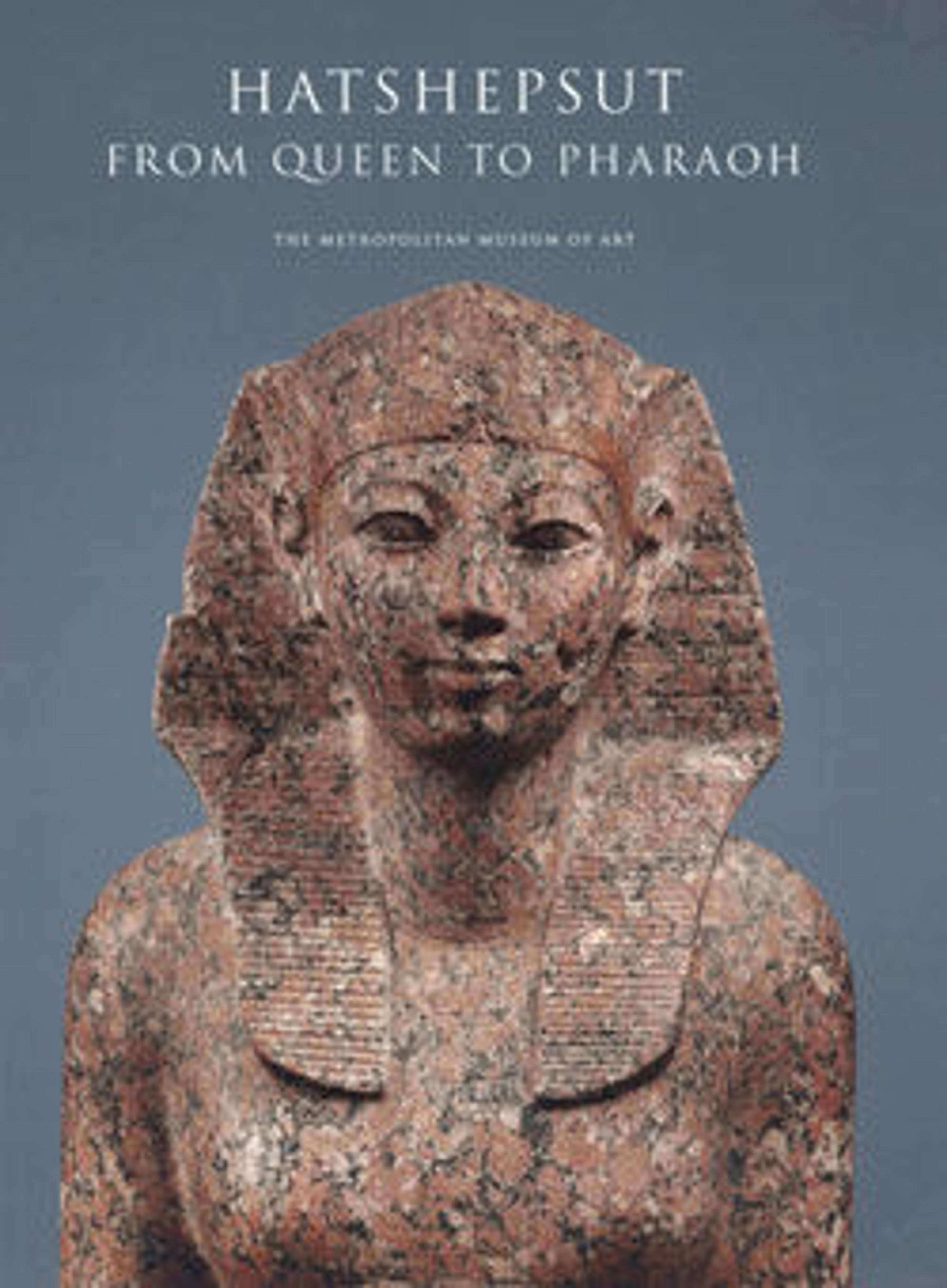Funerary mask of Hatnefer
Hatnefer's small burial chamber also contained the reburial of her husband, Ramose, who had died years earlier in his mid-30s. In addition, there were two wooden coffins containing the unidentified mummies of three women and four children who were probably members of the same family. Some personal items and simple grave goods had also been placed in the coffins. It appears that Senenmut took the event of his mother's death as an opportunity to move other relatives from their original graves to Hatnefer's tomb where their spirits could benefit from the funerary gifts provided for her burial. These goods included chests of linen cloth, stone and pottery jars containing animal fat and vegetable oil, baskets of food, spoiled linen, and personal belongings.
Hatnefer's mummy mask was molded from cartonnage, a material similar to papier-mache, but made with layers of linen and gesso. The mask was then overlaid with gold foil. The eyes are inlaid with Egyptian alabaster and obsidian set in ebony sockets.
Artwork Details
- Title: Funerary mask of Hatnefer
- Period: New Kingdom
- Dynasty: Dynasty 18, early
- Reign: reign of Thutmose II–Early Joint reign
- Date: ca. 1492–1473 B.C.
- Geography: From Egypt, Upper Egypt, Thebes, Sheikh Abd el-Qurna, Tomb of Hatnefer and Ramose, Mummy of Hatnefer, MMA excavations, 1935–36
- Medium: Cartonnage, gold, travertine (Egyptian alabaster), obsidian, ebony
- Dimensions: H. 45.8 cm (18 1/16 in.); W. 44 cm (17 5/16 in.)
- Credit Line: Rogers Fund, 1936
- Object Number: 36.3.1
- Curatorial Department: Egyptian Art
Audio
3390. Funerary mask of Hatnefer
Gallery 116
Most of the objects in this case come from a single tomb. It belonged to a couple named Ramose and Hatnefer. They received this rich burial equipment from their son Senenmut, one of the most important officials who served the pharaoh Hatshepsut.
There was a great disparity between the burials of Senenmut’s father, Ramose and his mother, Hatnefer. Ramose’s coffin was very simple and his body was wrapped in linen and a reused shirt. In contrast, Hatnefer’s mummy was covered with the gilded mask you see here. Its eyes were carved of alabaster and obsidian set in ebony sockets. The fine green heart scarab, with the gold setting and exquisite chain, was placed on her chest and the rings were on her fingers. Her mummy was also wrapped in a shroud inscribed with texts from the Book of the Dead. From all this, archaeologists have concluded that Ramose died sometime before his wife, when the family was quite poor. When Hatnefer died, Senenmut was able to fit out her mummy in style and reburied his father in her tomb.
One of the most amazing things preserved from this burial is the basket in the left corner of the case. Look inside it. You’ll see loaves of bread, dates, and raisins that have been there for almost thirty-five hundred years! The large pottery jar nearby contains wine and has never been opened. The alabaster vessel behind it contains some type of ointment, which still remains in a semi-liquid state. A sample of this amber-colored liquid is in the small vial next to the jar.
Now walk around to the other side of the case where you’ll see enough linen to outfit an entire family. These pristine sheets were found neatly folded in the whitewashed chests. Note the differences in quality, from very coarse to extremely fine. The two folded sheets at the left are of the sheerest fabric, with more than one hundred threads per inch. They are about sixteen feet long and forty inches wide and each weighs no more than a quarter of a pound. Picking up one of these is like holding a cloud in your hands.
More Artwork
Research Resources
The Met provides unparalleled resources for research and welcomes an international community of students and scholars. The Met's Open Access API is where creators and researchers can connect to the The Met collection. Open Access data and public domain images are available for unrestricted commercial and noncommercial use without permission or fee.
To request images under copyright and other restrictions, please use this Image Request form.
Feedback
We continue to research and examine historical and cultural context for objects in The Met collection. If you have comments or questions about this object record, please contact us using the form below. The Museum looks forward to receiving your comments.
